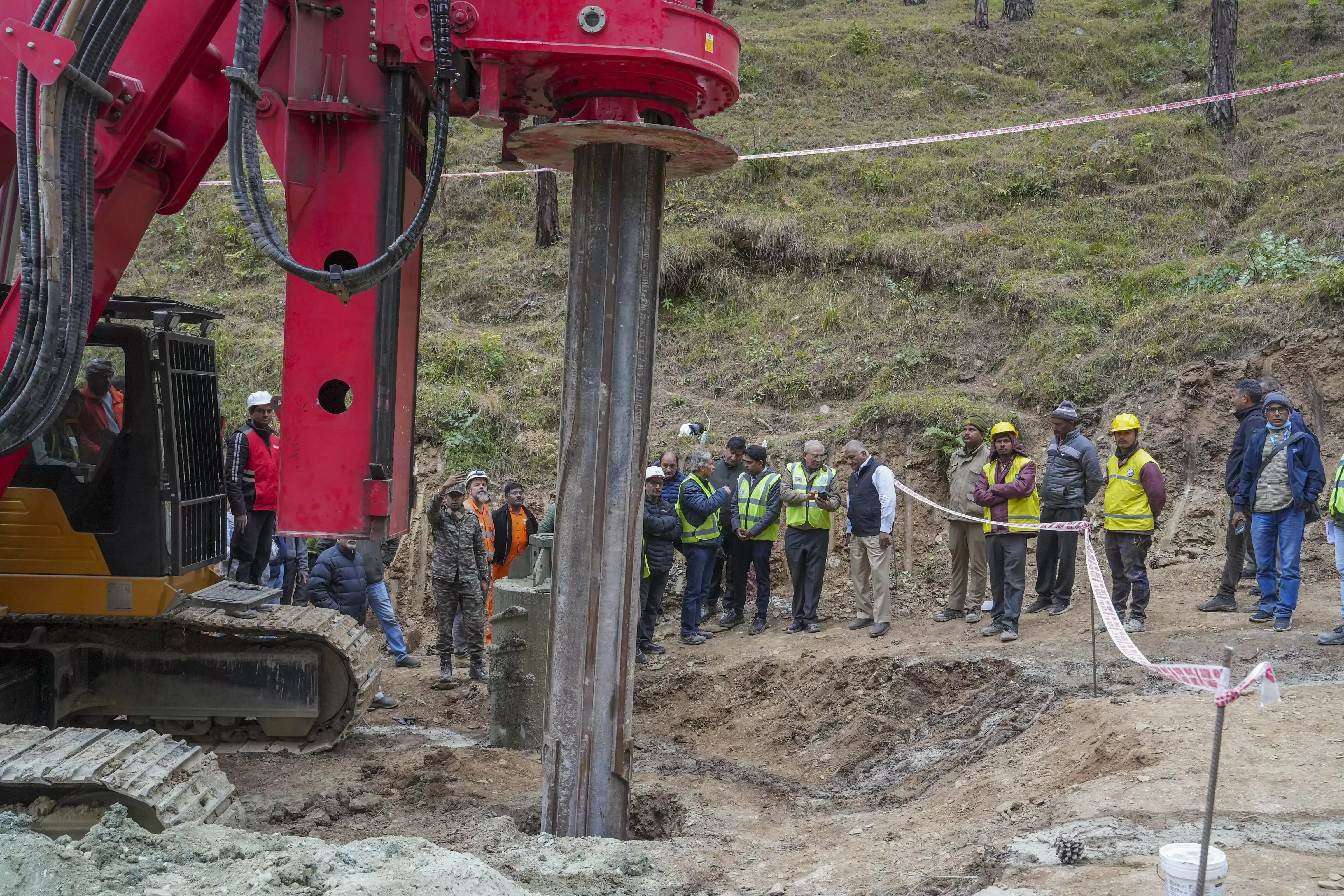
Silkyara tunnel collapse: Rescue mission explores 6 plans; first two are best options
Out of six rescue alternatives being explored, the first two, manual drilling through remaining 10- or 12-m rubble stretch and drilling down 86 metres from above, are considered as best options

As vertical drilling in the Silkyara tunnel began on Sunday (November 26) after the US-made auger machine broke down, the rescuers now have six plans in place.
The Indian Army is also now on board in the rescue mission that is underway for the last 15 days. Meanwhile, the 41 workers trapped in the under-construction tunnel are in good health condition and are getting their food and medicine, the National Disaster Management Authority member Lt General Syed Ata Hasnain (Retd) told the media.
They are in constant touch with their relatives through the communication lines, he added.
On day 14 of the multi-agency rescue mission, officials are exploring six alternatives. However, the focus is initially on the first two alternatives, which is manual drilling through the remaining 10- or 12-metre stretch of the rubble or, more likely, drilling down 86 metres from above.
Rescue work underway at Silkyara tunnel at Uttarakhand. Pic: PTI
The six plans being explored are:
Plan 1
Work is currently on to retrieve broken parts of the auger machine stuck in the debris. The heavy drill brought in from America to break through nearly 60 meters of debris got damaged as it was drilling through the rubble of the collapsed Silkyara tunnel. A plasma cutter was flown in from Hyderabad to cut and remove parts of the auger machine stuck in the rubble inside the Silkyara tunnel. After the parts are removed, manual digging will begin.
According to reports, the auger machine has already drilled 47 metres inside the tunnel. Manual digging will be done for the rest 15 metres, after which an 800-mm or 700 mm pipe will be inserted into the rubble to prepare an escape passage. The Indian Army is expected to carry out the manual drilling, which will however take time.
This is considered to be the best option.
Plan 2
Considered as the second best option, this plan involves vertical drilling, which has already started around noon.
Fifteen meters of drilling has already been completed, Hasnain told reporters. After 86 meters of vertical drilling, the tunnel's crust will have to be broken to bring out the trapped workers in buckets one by one.
This work, which is expected to take four days if they don't meet with any other obstacle, is undertaken by Satluj Jal Vidyut Nigam
Plan 3
This involves drilling sideways into the tunnel but work on this has not started as yet. Machines for undertaking sideways drilling (perpendicular drilling) are expected to reach the rescue site during night, Hasnain said.
Plan 4
The rescuers are contemplating vertical drilling on the opposite end of the tunnel. Currently, the vertical drilling is happening from the Silkyara side of the tunnel and there is a plan to drill from the other side of the tunnel. This is the Barkot side of the tunnel. But this is just an alternative at present.
Plan 5
Under plan 5, blasting on the Barkot side of the tunnel was done on Sunday morning and an area of 10-12 metres have been breached.
Plan 6
The 6th plan involves using drift technology which will involve scrapping the sides of the tunnel. This will be handled by army engineers.
The rescue effort began on November 12 when a portion of the under-construction tunnel on Uttarakhand's Char Dham route collapsed following a landslide, cutting off the exit for the workers inside. The workers are in a built-up two-kilometre stretch of the tunnel.
Now trapped for over 360 hours, the 41 men may now have to wait for several more days, maybe weeks, before they are brought out safely. However, they are being sent food, medicines and other essentials through the six-inch wide pipe.
Even as Hasnain said that the operation can take a long time, international tunnelling expert Arnold Dix said the workers will possibly return home before
(With agency inputs)

